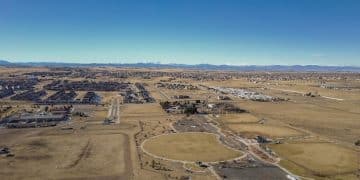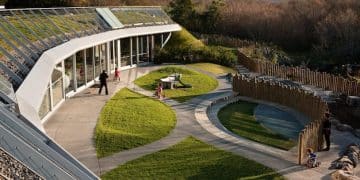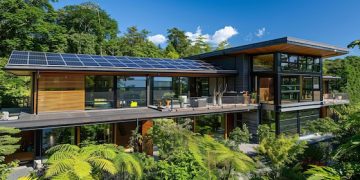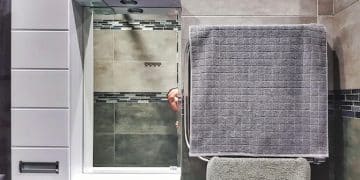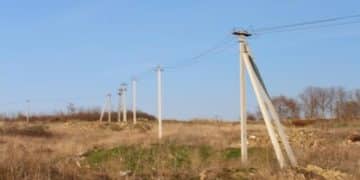Conserve Energy This Summer: 7 Smart Strategies to Slash AC Bills by 25%
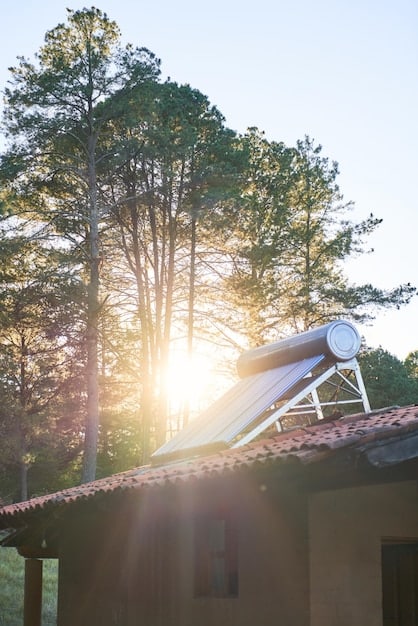
Conserving energy during summer can be achieved through a combination of smart strategies, including optimizing AC usage, leveraging natural ventilation, and adopting energy-efficient habits, potentially reducing energy consumption by up to 25%.
As the summer heat intensifies, so does the urge to crank up the AC. But before you do, consider this: you can conserve energy during summer and significantly lower your AC usage—potentially by as much as 25%—without sacrificing comfort. Let’s explore how.
Understand Your Energy Consumption
Before diving into strategies, it’s crucial to understand where your energy is going. This awareness sets the stage for targeted energy conservation efforts.
Conduct an Energy Audit
Start with a home energy audit. This can be a professional service or a DIY assessment. An audit identifies areas where energy is being wasted, such as poorly insulated walls or leaky windows.
Monitor Your Energy Bill
Track your energy bills month by month. Look for spikes during the summer months to pinpoint when and where you’re using the most energy. Many utility companies offer online tools to help you monitor your usage.

By understanding these spikes, you can make changes to your routines and reduce useage of AC while still conserve energy during summer.
- Identify energy vampires (devices that consume energy even when turned off).
- Check for drafts and air leaks around windows and doors.
- Assess the efficiency of your appliances.
Understanding your energy consumption patterns empowers you to make informed decisions and prioritize energy-saving strategies effectively. From fixing leaks to unplugging unused electronic devices, every action matters in the grand scheme of energy conservation.
Optimize Your AC Usage
The air conditioner is often the biggest energy hog in the summer. Optimizing its use can lead to significant savings and help you conserve energy during summer.
Set the Thermostat Strategically
Adjusting your thermostat can significantly impact your energy bill. The Department of Energy recommends setting your thermostat to 78°F (26°C) when you’re home and higher when you’re away.
Use a Programmable Thermostat
A programmable thermostat allows you to set different temperatures for different times of the day. You can schedule it to raise the temperature while you’re at work and lower it before you return home.
- Install a smart thermostat for remote control via smartphone.
- Avoid setting the thermostat too low, as it won’t cool the house faster and wastes energy.
- Use the “auto” setting on your fan to circulate air only when the AC is running.
Strategic AC usage, combined with other energy-saving measures, not only reduces your carbon footprint but also translates to substantial cost savings on your energy bills. It’s a win-win situation for both the environment and your wallet.
Leverage Natural Ventilation
Before reaching for the AC remote, consider harnessing the power of natural ventilation. Opening windows and doors can create refreshing airflow and help you conserve energy during summer.
Open Windows at Night and Early Morning
Take advantage of cooler nighttime temperatures by opening windows to let the fresh air in. Close them during the day to trap the cool air inside.
Use Fans to Circulate Air
Ceiling fans and box fans can help circulate air, making a room feel cooler than it actually is. They use significantly less energy than air conditioners.
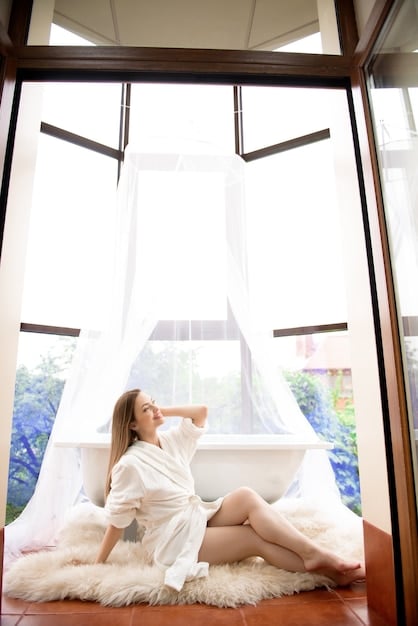
This can help offset the amount you use your AC and help conserve energy during summer.
- Ensure windows and doors have screens to keep insects out.
- Consider the direction of the prevailing winds to maximize airflow.
- Use window awnings to block direct sunlight from entering your home.
Natural ventilation is a cost-effective and eco-friendly solution to beat the summer heat. By strategically opening windows and using fans, you can create a comfortable indoor environment while reducing your reliance on air conditioning.
Seal Air Leaks
Air leaks can compromise the efficiency of your cooling system. Sealing these leaks is a simple yet effective way to conserve energy during summer.
Caulk and Weatherstrip Windows and Doors
Apply caulk to seal any gaps around window frames and doorframes. Weatherstripping can be used to create a tight seal between the door or window and its frame.
Insulate Attics and Walls
Proper insulation is crucial for keeping your home cool in the summer. Insulate your attic and walls to prevent heat from entering your living spaces.
Sealing air leaks and improving insulation are essential steps toward creating an energy-efficient home. These measures not only reduce your energy consumption but also improve indoor comfort and air quality, making your home a healthier and more pleasant place to live.
Use Energy-Efficient Appliances
Outdated appliances can consume a significant amount of energy. Upgrading to energy-efficient models can help you conserve energy during summer and throughout the year.
Look for the Energy Star Label
When shopping for new appliances, look for the Energy Star label. These appliances meet strict energy-efficiency guidelines set by the EPA.
Unplug Electronics When Not in Use
Many electronic devices continue to draw power even when they’re turned off. Unplug chargers, TVs, and other electronics when you’re not using them to prevent energy waste.
Investing in energy-efficient appliances is a smart long-term strategy for reducing your energy footprint and saving money on utility bills. By choosing Energy Star-certified models and adopting mindful usage habits, you contribute to a more sustainable future while enhancing your home’s energy efficiency.
Adjust Daily Habits
Simple changes in your daily habits can contribute to significant energy savings. These adjustments can help you conserve energy during summer without major lifestyle changes.
Cook Outdoors
Use your grill or outdoor kitchen to cook meals. This prevents your oven from heating up your home, which can increase your AC usage.
Wash Clothes in Cold Water
Washing clothes in cold water can save a significant amount of energy, as heating water accounts for a large portion of the energy used by washing machines
- Run major appliances (like dishwashers and dryers) during off-peak hours.
- Take shorter, cooler showers to reduce water heating costs.
- Wear light-colored, breathable clothing to stay cool without relying on the AC.
Adjusting daily habits is a practical and sustainable approach to energy conservation. By making small changes in your routine, you can collectively reduce your energy consumption, lower your utility bills, and contribute to a cleaner, greener environment.
Landscaping for Shade
Strategic landscaping can provide natural shade, reducing the amount of sunlight that enters your home. This passive cooling technique can help you conserve energy during summer.
Plant Trees and Shrubs
Plant deciduous trees on the south and west sides of your home. These trees provide shade in the summer and lose their leaves in the winter, allowing sunlight to warm your home.
Use Vines and Trellises
Grow vines on trellises or walls to create shade. This can be particularly effective for blocking sunlight from entering through windows.
Strategic landscaping is a natural and aesthetically pleasing way to conserve energy and enhance your home’s value. By carefully selecting and positioning plants, you can create a cooler, more comfortable indoor environment while contributing to a healthier planet.
| Key Point | Brief Description |
|---|---|
| 💡 Energy Audit | Identify energy wastage to focus on conservation efforts. |
| 🌡️ Thermostat | Set to 78°F when home and higher when away using a programmable thermostat. |
| 🍃 Natural Ventilation | Open windows at night and use fans to circulate cool air. |
| 🌳 Landscaping | Plant trees to shade your home and reduce sunlight exposure. |
Frequently Asked Questions
▼
Look for consistent energy bills, no drafts, and adequate insulation. A professional energy audit can also provide a detailed assessment and recommendations to improve efficiency.
▼
The Department of Energy recommends setting your thermostat to 78°F (26°C) when you’re home and higher when you’re away to conserve energy and reduce cooling costs.
▼
While they may have a higher initial cost, energy-efficient appliances save money in the long run through reduced energy consumption. Look for rebates and incentives to offset the purchase price.
▼
Trees and shrubs provide shade, reducing the amount of sunlight that enters your home. This natural cooling effect helps lower indoor temperatures and reduces the need for air conditioning.
▼
Energy vampires are electronic devices that consume power even when turned off. Unplug chargers, TVs, and other electronics when not in use, or use power strips to easily cut off their power supply.
Conclusion
By integrating these seven smart strategies into your daily routine, you can conserve energy during summer and reduce your AC usage by up to 25%. Each step, from optimizing AC settings to embracing natural ventilation and adjusting daily habits, collectively contributes to a more energy-efficient and eco-friendly lifestyle.
